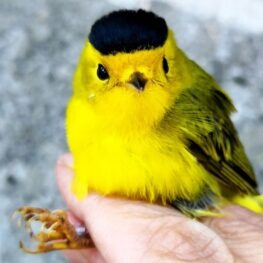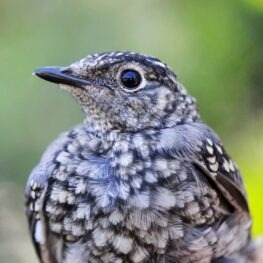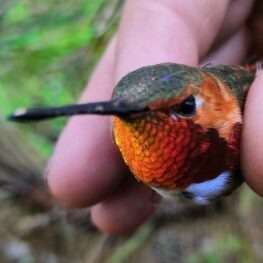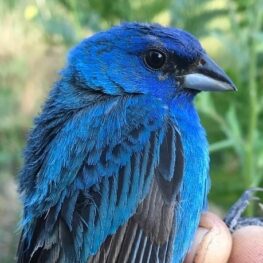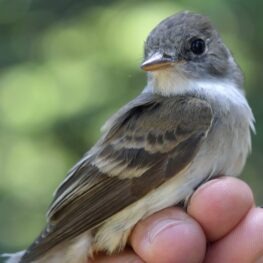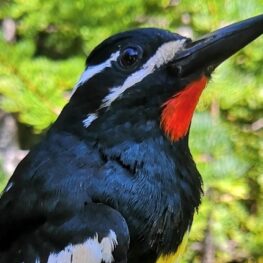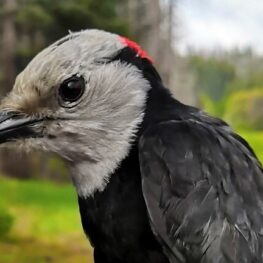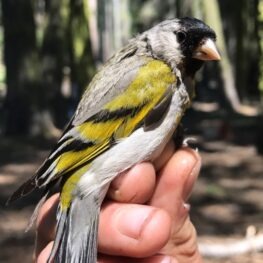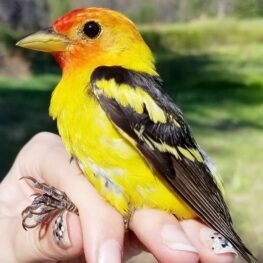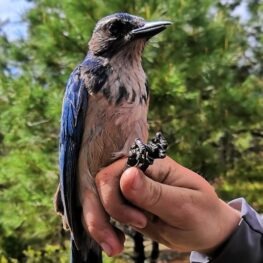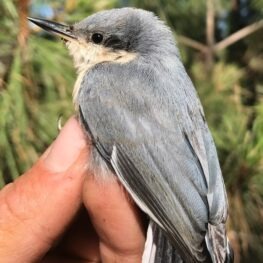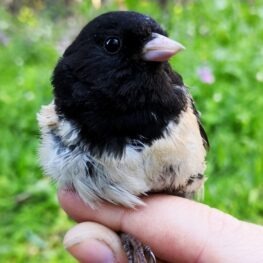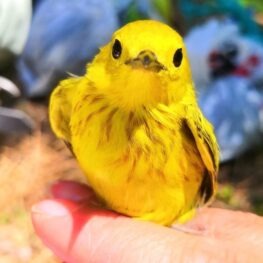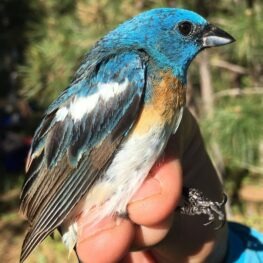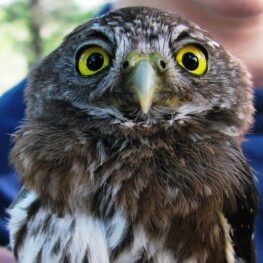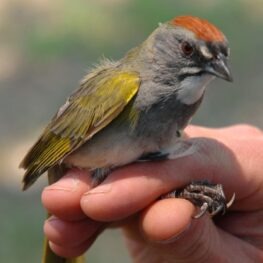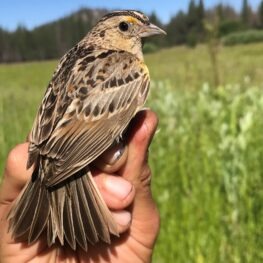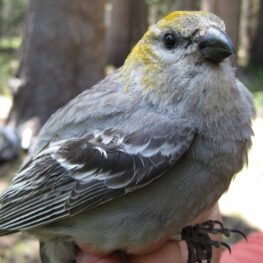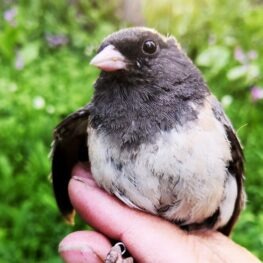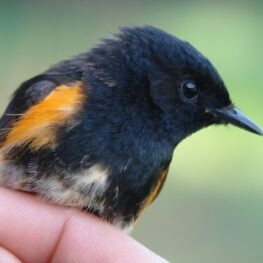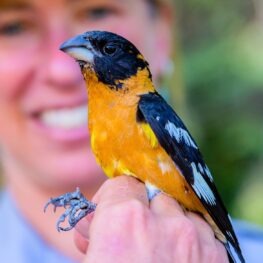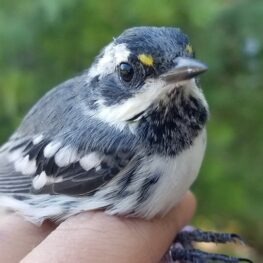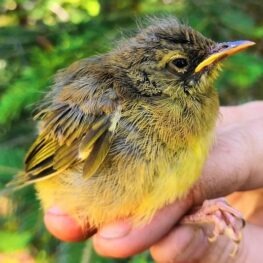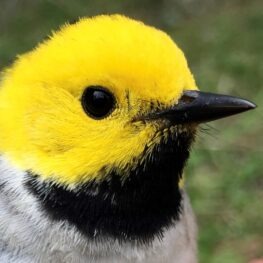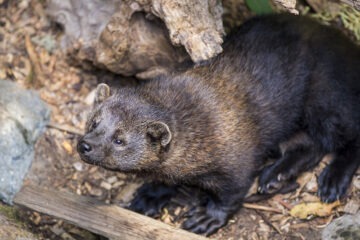MAPS in Yosemite: A 30-Year Legacy
In 1990, Yosemite opened its first MAPS (Monitoring Avian Productivity and Survivorship) research station, in Hodgdon Meadows. Three decades later, there are seven MAPS stations in the park, and hundreds across the U.S. and Canada.
Yosemite’s MAPS program, which Conservancy donors have supported since 2008, has captured data on tens of thousands of individual birds, resulting in an immense trove of information on avian biodiversity, migration and breeding, and on how birds respond to changing environmental conditions.
The Institute for Bird Populations initiated the MAPS program in 1989 to monitor avian demographics and inform conservation efforts. From Yosemite to Nantucket, all MAPS researchers follow the same procedures to capture and record data on birds across the continent. In concert with its sister program, MoSI (Monitoreo de Sobrevivencia Invernal), which operates in the southern U.S. and Latin America, MAPS stations gather a wealth of information to help scientists understand how bird populations and their habitats are changing.
Studying Sierra Birds
In Yosemite, MAPS stations typically operate from mid-spring through mid-summer. Researchers follow strict MAPS protocols as they set up mesh mist nets; document each captured bird’s species, sex and age; and attach tiny aluminum identification bands to birds’ legs. MAPS crews gather data on a huge variety of avian species — in 2019, Yosemite researchers documented more than 2,100 individual birds at the meadow stations, from frequently observed flyers, such as song sparrows and robins, to far less common species, including a willow flycatcher, a state-endangered species once thought to have vanished from the Yosemite area.
The birds that pass through the MAPS stations range vastly in size, from tiny hummingbirds to foot-long scrub jays, and in hue. Some sport vibrant yellows or rich blues, others are clad in earthy browns and soft grays. And whether small or large, colorful or subdued, a seasonal visitor or year-round resident, each bird occupies an important ecological role in Yosemite — and can help scientists better understand avian populations in the Sierra and far beyond.
Meet the MAPS Visitors
Here are just a few of the feathered migratory and all-season Yosemite residents that have stopped by the MAPS stations in recent years:
- Wilson’s warbler. (Photo: NPS/Christine Singfield)
- Townsend’s solitaire. (Photo: Institute for Bird Populations)
- Rufous hummingbird. (Photo: NPS/Christine Singfield)
- Indigo bunting. (Photo: NPS)
- Willow flycatcher. (Photo: NPS)
- Williamson’s sapsucker. (Photo: NPS/Christine Singfield)
- White-headed woodpecker. (Photo: NPS/Christine Singfield)
- Lawrence’s goldfinch. (Photo: NPS)
- Western tanager. (Photo: NPS)
- California scrub-jay. (Photo: NPS/Christine Singfield)
- Pygmy nuthatch. (Photo: NPS/Christine Singfield)
- Oregon junco. (Photo: NPS/Christine Singfield)
- Yellow warbler. (Photo: NPS/Christine Singfield)
- Lazuli bunting. (Photo: Melissa Simon)
- Northern pygmy owl. (Photo: NPS)
- Green-tailed towhee. (Photo: Institute for Bird Populations)
- Grasshopper sparrow. (Photo: NPS)
- Pine grosbeak. (Photo: NPS)
- Oregon junco. (Photo: NPS/Christine Singfield)
- American redstart. (Photo: NPS)
- Black-headed grosbeak. (Photo: Ann & Rob Simpson)
- Black-throated gray warbler. (Photo: NPS/Christine Singfield)
- MacGillivray’s warbler. (Photo: NPS/Christine Singfield)
- Hermit warbler. (Photo: NPS)
More Than Flashy Feathers
As you can see, the birds that researchers carefully study through the MAPS program are a treat for the eyes, certainly — and with their trills, whistles and bright melodies, they’re not hard on the ears, either! Is there anything more relaxing than a chorus of birdsong? But bird research is no walk in the park, so to speak: Cataloging Yosemite’s avian species requires careful techniques, painstaking documentation and lots of patience.
That hard work pays off: Researchers have gathered data that will help inform efforts to restore Ackerson Meadow, which could provide vital habitat for diverse birds and other wildlife. They’ve made significant contributions to avian research, including by analyzing decades of data to study how birds’ breeding habits are shifting, and by using tiny GPS-equipped devices to determine that black-headed grosbeaks are “molt-migrants.” And they’ve helped hundreds of people, including young students and early-career biologists, find inspiration in the ornithological world.
Want to learn more about Yosemite’s feathered residents and how your support helps scientists study and protect them? Check out our “Songbird Notes” blog series, featuring guest posts from 2019 bird crew member Christine Singfield; read our “Songbird Science” post; expand your avian horizons and learn about research on great gray and spotted owls; and enjoy a virtual birding walk with naturalist guide Pete Devine.
Top: A Yosemite bird researcher holding a Pacific-slope flycatcher. Photo: Samir Freiha/National Geographic, July 2019.
A version of this story appeared in the May 2020 issue of Yosemite Conservancy magazine.

